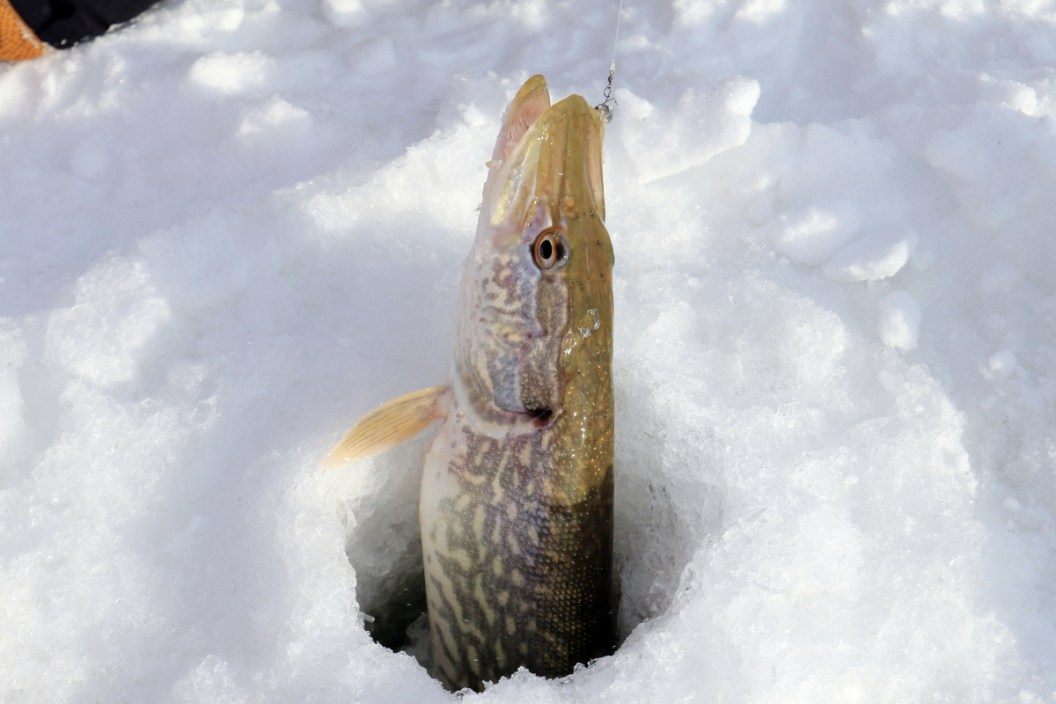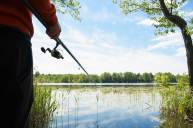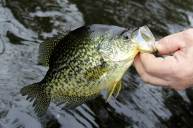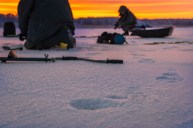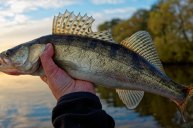Ice fishing for northern pike is a surefire cure for the winter blues.
With the winter in full swing, many anglers are taking to the ice for some of the first freshwater fishing trips of the year. It can be argued that northern pike are one of, if not the most popular game fish to target through the ice. Mostly because this is a cold water species and they are extremely active feeders during even the dead of winter.
Over the years, anglers have developed more ways to target pike through the ice than probably any other species. From a simple jigging setup to more elaborate tip-ups and spearing shanties, targeting pike through the ice is never dull.
Today we'll give you some fishing tips on the gear you'll need, how to locate them, and some of the best techniques to try on these hard fighting toothy predators this season. You'll quickly find ice fishing for northerns makes the long winter months a lot more bearable.
Ice fishing pike: where to find them.
Catching northern pike through the ice is not usually that difficult. The hard part may simply be in finding where the fish are in the lake once the temperatures drop each season. It helps if you have a prior knowledge of the water you're fishing from the summer months. Remember those large weed edges and weed beds you saw or mapped on your electronics back in July? They are likely prime places where the pike are hanging out right now.
In the early part of ice season, most pike anglers agree it is best to target shallow water weedy areas. The pike are usually cruising in depths not more than five to six feet at the most. Plenty of anglers find success every year in waters as shallow as four feet. While weeds are a great place to start, you can better your odds even more if you can find underwater humps, ridges, drop-offs, and saddles. These places often act like magnets to baitfish and in turn pike in the winter months. If you can find a good hump in five to fifteen feet of water, there's a good chance it's going to hold pike.
As the season progresses you are likely going to find yourself look towards deeper water at the midpoint of the season. On larger lakes like Lake of the Woods in Minnesota, or Lake Winnebago in Wisconsin, you might find pike out in open water depths out to 50 feet or more. Smaller water bodies in the Midwest often top out at that depth or as shallow as 30 feet, which decreases the depth the pike will move to in the coldest part of the winter. It pays to have good electronics and to drill multiple holes to find where they're holding in the water column.
If you do not have electronics, a good location tactic to try is to set tip-ups at varying depths from five feet and gradually increase depth until you get a bite. Once you start getting into the late ice and the water warms, the pike will often move shallow again as they start fattening up for the spawning seasons.
Gear for catching pike through the ice.
This is going to depend on the style of fishing you plan on doing. Fortunately, most of this gear is cheap, which makes it easy to get into targeting these predators. If you are planning on jigging with a traditional rod, a medium to heavy action ice rod is usually a necessity for battling larger specimens of pike. Most anglers use a spinning reel loaded up with 20-pound braided line. Braid offers not only the strength required for pike, but also excellent abrasion resistance that will keep your line from wearing that big pike has your line up against the edge of the hole.
Do not forget about the teeth of the pike. They will easily cut through monofilament or braid if you're not careful. A short wire leader is almost a necessity. Although many anglers now use a heavy fluorocarbon leader instead. It may be the preferred leader choice on high pressure or clear lakes where pike are wise to the tactics of fishermen simply because it is less visible.
Anyone planning to use a rod might consider a quick-strike rig. There are many different types on the market. Each of them holds a spinning rod in place while using live or dead baits. The rod pops free to indicate fish on and you can fight them from there.
The other popular method for ice fishing pike involves using tip-ups. The big difference here is tip-ups have a reel that holds the line underwater. When a fish takes your bait, the line pops up a flag to indicate the strike. The fish is battled by handlining it. Tip ups come in a variety of styles, but they all do the same general job of suspending your bait at a specific depth. Get some friends together with multiple tip-ups and it will help you cover the most water possible. The great thing about tip-ups is most only cost $10 to $20 at most.
The last method of ice fishing for pike involves spearing. Many states have a specific spearing season. You will need a bit more gear for this method. You will need a dark house shanty of some sort to block out the light and make the fish easier to spot. A chainsaw is also needed to cut the large holes in the ice, and a decoy to bring the fish in. Commercially made decoys are available, but many spearers choose to carve their own. Finally, you will need a pike spear. This is probably the most challenging method of ice fishing for pike, but it is also incredibly rewarding when your spear connects.
Baits and lures.
The best pike fishing is usually done using live baits. Large shiners, minnows, and suckers suspended at the proper depth and rigged through the back next to the dorsal fin with treble hooks will often produce the most strikes. You might get some bycatches of walleye, bass, or bowfin, but that's part of the fun. Live baits are most popular when tip-up fishing, however you should not discount using dead baits either. Pike are noted scavengers when the opportunity strikes and sometimes that's all that's needed to get a strike. Some anglers like to add flashy blades, or to dye freeze dried dead baits to make them more enticing to the pike.
If you are planning to use a fishing rod, jigs tipped with minnows can be effective all winter long. In-line spinnerbaits can also be extremely effective. One of the most popular ice fishing artificial lures is probably the iconic Daredvel spoon in a red and white. It can work on its own, but many anglers choose to enhance the lure by adding a small minnow for extra action and flash. Consider also using a Rapala jigging rap or slab rap in bright vibrant colors. Something that matches baitfish like perch and bluegill is often ideal for smaller, shallow lakes.
Final thoughts and tips.
Remember to keep deep water in mind during them midwinter if the bite suddenly drops off in the shallows. The pike haven't stopped feeding, it's likely they just temporarily moved. In addition to electronics, an underwater camera is often an extremely useful tool for targeting pike under the ice. It can also make for some of the most exciting ice action you will ever have while watching a big one suck in your lure on the monitor.
In many ways, fishing for pike through the ice may be even more exciting than targeting them with traditional casting techniques in the spring, summer, and fall. Give it a try this winter, you may find you have a new favorite way to get through the hardest part of the winter.
Products featured on Wide Open Spaces are independently selected by our editors. However, when you buy something through our links, we may earn a commission.
For more outdoor content from Travis Smola, be sure to follow him on Twitter and check out his Geocaching and Outdoors with Travis YouTube channels.
NEXT: ANGLER JIGS UP NORTHERN PIKE WITH A CLASSIC DAREDEVL SPOON
WATCH
